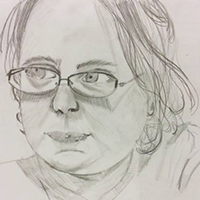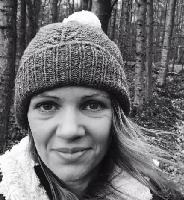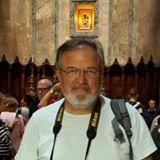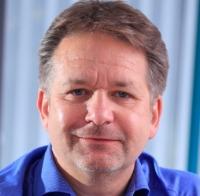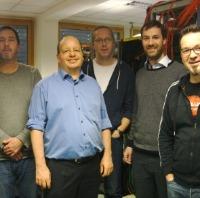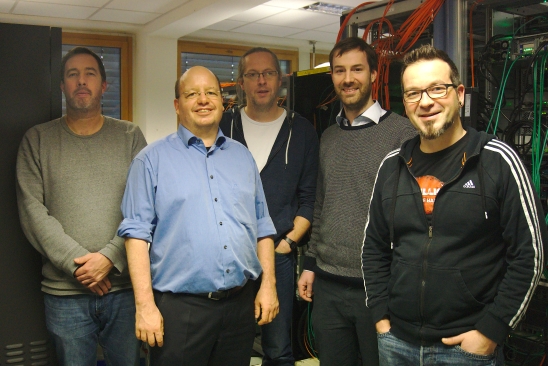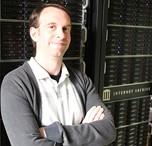DPC
The Next Leg in the Preservation Relay
Amy Kirchhoff and Sheila Morrissey work for the Portico digital preservation service which is part of ITHAKA, a not-for-profit organization in the USA
Portico, a service of the non-for-profit organization ITHAKA, is a preservation service for the digital artifacts of scholarly communication. Portico’s original remit 15 years ago– one shared by many DPC member organizations – was to develop a sustainable infrastructure, both institutional and technological, that would support the scholarly community’s transition from reliance on print journals to reliance upon electronic scholarly journals – more generally, to ensure that scholarly literature, published in electronic form, remains available to future generations of scholars, researchers, and students.
The occasion of the International Digital Preservation Day is an opportunity for us to reflect both on the continuing challenges (and opportunities) in preserving scholarly literature, and what we think might be new challenges ahead.
Written into our institutional DNA is the requirement simultaneously to preserve content at scale, and to preserve it in a fiscally sustainable way. Again, this is challenge we all share, across all the content domains we jointly seek to preserve. The sheer ever-increasing volume of content flowing into Portico was a major motivator for undertaking a two-year project, launched in mid-2016, to develop the next-generation Portico technical infrastructure project.
Digital Preservation at Historic Environment Scotland
My name is Hannah Smith and I work for Historic Environment Scotland, based in the digital archive team within the Heritage Directorate. For the first ever Digital Preservation Day I thought I would share some of the progress we have been making in terms of digital preservation at HES, as well as some of the more day to day work in the digital archive. We have been actively collecting digital archive since 2003, receiving both internally and externally generated material. Historic Environment Scotland currently holds more than 437,000 catalogued digital items which equates to around 32TB of archived data. Over the last 2 years, the digital archive has been making huge strides in renewing the technical infrastructure that underpins our work and to ensure the long term preservation of our digital records. Our goal is to provide the best possible care for our digital archives and we are looking to bench mark our services within the European accreditation framework. In 2015 HES invested in new trusted digital repository software, and work has focused on integrating this preservation system with our own repository. We have made huge advances in the standard of care we provide to our digital archive: 617,338 individual digital files have been audited and processed to ensure they conform to appropriate standards.
Educating Digital Stewards
Rhiannon Bettivia is a Postdoctoral Research Associate at the School of Information Sciences (iSchool) at the University of Illinois, Urbana-Champaign
I frame this post as a set of considerations for developing training and teaching modules for students and trainees endeavouring to enter the field of digital preservation. I teach such a module 2-3 times a year, and my university offers it 4 times a year with the help of adjunct instructors. It is often full to waitlist room only, meaning we will send anywhere from 50 up to as many as 110 students through this course in a calendar year. Chris Prom, of the University Archives, related that he was once requested to teach a module on advanced arrangement and description of digital materials for the Society of American Archivists nine times in a single year. The trend here is pretty clear: there are plenty of practitioners in the pipeline, ready to enter our field and to steward us into the future of digital preservation.
The Threat of the Double Extinction
Cees Hof is Project Acquisition Manager at Data Archiving and Networked Services(DANS) in the Netherlands
A first glimpse at the DPC ‘Save the Bits’ announcement on the compilation of a list of Digitally Endangered Species confused me when it passed my screen. Further scanning the text only increased this feeling as I encountered more ‘species’ related references, but it soon turned out I was misled by my own biologically biased search image.
It was especially the ‘IUCN Red List of Threatened Species’ that was steering me wrong. A list very familiar to me as a former coordinator of several large Biodiversity data programmes. But the DPC suggested list had nothing to do with plants, animals and microbes soon to disappear from our planet’s surface. It was all about their digital equivalents occupying binary niches and threatened by the lack of proper digital archives, outdated software formats, or insufficient human efforts to safeguard their existence.
PERSIST: A Global Dialogue on Digital Preservation
Robert Buckley works for the National Archives of the UAE in Abu Dhabi
PERSIST: A Global Dialogue on Digital Preservation
To those unfamiliar with PERSIST, it is a project within the UNESCO Memory of the World Programme, whose International Advisory Committee is currently chaired by Dr. Abdulla Alraisi, Director General of the National Archives of the UAE. The Memory of the World (MoW) Programme was created in 1992 to facilitate preservation of the world’s documentary heritage and to assist in providing universal access to it.
When my colleague Hamad Al Mutairi, Director of the Archives Department here at the National Archives of the UAE, and I first sat down to discuss this contribution, he drafted the outline of a general digital preservation policy. We realize that having a policy for digital preservation or digital continuity is not a unique thing; numerous institutions have one already, suitably adapted to the environment in which they operate. What is different is that the effort here is partly stimulated by our participation in the PERSIST project.
The PERSIST project is essentially a digital component of the MoW programme. It is an outgrowth of the The Memory of the World in the Digital age Conference held in Vancouver in 2012. PERSIST aims to address the challenges of long-term digital preservation and the risks of losing access to part of our digital heritage. Partnering with UNESCO on PERSIST are the International Council of Archives (ICA) and the International Federation of Libraries Associations and Institutions (IFLA).
How can Digital Preservation move beyond those in the know to those with the need
Jon Tilbury is Chief Technology Officer for Preservica, based in the UK
Digital Preservation has come a long way since the early research projects. The earliest practitioners were academics and specialists who set this field in the right direction and contributed hugely to defining what Digital Preservation is, creating the language of SIPs and DIPs, ingest and dissemination and preservation planning that we all use today. This journey will be complete when information is preserved without the need to understand how and long-term retention and use is just another tick box in your day-to-day IT platform. How far are we away from creating this preserved future?
The early Digital Preservation research projects started in the late 1990s and reached their peak with large numbers of EC funded projects in the first 15 years of the millennium. I become involved in the early PRONOM days and enjoyed many trips around Europe on four different research projects as practitioners exchanged ideas and built prototypes that encapsulated these ideas. We used the OAIS reference model to create a common language that we all now use to describe our systems.
Guten Tag from the North Rhine-Westphalian Library Service Centre
Martin Iordanidis is Information Safety Officer at HBZ in Germany
Hey, thats us! Us at the North Rhine-Westphalian Library Service Centre (hbz) in Cologne, which is an authority of the federal state of North Rhine-Westphalia, Germany.
Networked Approach to Preserving Software
Jessica Meyerson is Research Program Officer for Educopia Institute in Austin, Texas, United States
One of key characteristic of information infrastructure outlined by Star & Ruhleder (1996) is that is ‘becomes visible on breakdown.’[1] While software does in fact breakdown, requiring patches or upgrades, as digital materials move from active use to the reuse context of cultural memory organizations, software breakdown can be understood as the inability to support meaningful access to digital information (ie, scientific or social scientific data, born-digital manuscript materials, complex models of the built environment) due to software dependencies and their associated challenges. This breakdown not only shines light on software (as cultural heritage itself and a tool for accessing existing digital cultural heritage), it makes visible the social structures and practices in which software is embedded – is a comprehensive breakdown of social structures to support information access including communication, legal systems and markets. By thinking about software as infrastructure we gain insight into ways in which software preservation fits into broader digital preservation practice as well as approaches that may prove to be the most effective in addressing the challenges of software preservation.
Lossy Accelerant: Surfeit and Fragment in Digital Collections Archives
Jefferson Bailey is Director of Web Archiving Programs for The Internet Archive in the USA
Archival collections have always been incomplete. Being homogenous, selective groups of records preserved through time, they support attestation and evidentiary consideration only through their longitudinal availability. Multiple appraisal, selection, and processing strategies have developed over the history of the archival endeavor to address the ways in which the archival collection is, by nature, a partial or symbolic representation. From documentation strategy to the study of “archival silences,” both archivists and users alike have grappled with the challenges of incompleteness inherent in the archive. The emergence of born-digital records, and the ease of their creation, alteration, and publication, has compounded these challenges by introducing a documentary environment that is at once more rich and more easily preserved, but also more dynamic, more ephemeral, and more partial. Furthermore, digital records have introduced their own characteristics of incompleteness: bit corruption, format migration, rendering and technological dependence, and other vulnerabilities that can impede recreation or interpretation.
What we’ve done well, and some things we still need to figure out
David Minor is Director of the Research Data Curation Program at the University of San Diego Library and formerly the Chronopolis Program Manager
I’ve worked in the Digital Preservation field for about a dozen years, and have had the good fortune to see a number of generations pass. I’d like to offer some thoughts on what we’ve done well, and some things we still need to figure out.
What we’ve done well:
- Technology. In many ways, we’ve “solved” many of the digital preservation technology issues. Can we preserve bits for years and years? Yes. Can we move these bits around multiple locations and service backends and guarantee their persistence? Yes. Can we migrate data through various data types and outputs? Yes. (If we need to. Still an open question.) In many ways, the digital preservation community has made enormous strides in infrastructure that would have stymied us in the recent past. Can we do better? Of course. Will there be new technologies that come along and cause us to rethink everything we’ve done up to now? Hopefully. But if not, well, we can do our jobs, and we can do them well.
- Variety of options. A striking facet of our community is the range of non/not-for profit options that 100% compete with commercial fare. We don’t celebrate this enough. Other significant segments of the digital library landscape have struggled with this for decades with little success. Today an organization that wants to contract with a preservation service can choose from at least a half dozen community-driven efforts, that are at least as good (if not better) than expensive commercial offerings. This is completely beyond awesome. It shows both the need for digital preservation across wide swaths of organizations and enterprises, as well as the dedication of large groups of people to solve thorny issues.































































































































